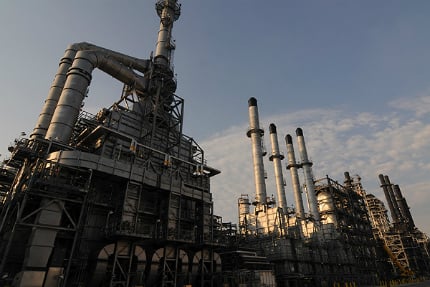
Source: Royal Dutch Shell plc
Another indication of the rising demand from refineries is the drop in the cost of storage space for crude. It was not all that long ago that we were reading reports that all that oil would have no place to go. The 521 million-barrel U.S. storage capacity was said to be holding nearly 450 million barrels and filling fast.
There was never any real threat that the United States would run out of storage tanks, though. The average fill rate (less drawdowns) was around 6.7 million barrels a week. Including the roughly 20 million barrels or so in pipelines, ships and other local storage, it would have taken another seven months at least to fill the tanks to overflowing. And with production already declining, that was never going to happen.
ALSO READ: Merrill Lynch Raises Energy Outlook: 4 Top Oil Stocks to Buy Now
As always happens, when gasoline prices decline in the United States, demand went up. More people were buying pickups and SUVs that use more gas than compacts and hybrids, and more people were driving more miles. Refiners, which were completing their annual scheduled maintenance and turnaround in March and April, have since returned to the high levels of production we are now seeing.
U.S. exports of refined products have also picked up. In 2009 U.S. refiners exported an average of 1.78 million barrels a day of finished products. That total had risen to 2.77 million barrels a day by 2014 and reached 3.52 million barrels a day in the week ending May 15, down somewhat from 3.76 million barrels a month earlier.
Last week the U.S. Energy Information Administration said that the crack spread based on the price of Brent at New York harbor rose to an eight-year high of $0.38 per gallon in April. The crack spread is the difference between the price a refiner receives for products and the cost of the crude oil to make those products. Thus a 42-gallon barrel of refined product in April yielded a crack spread per barrel of $15.96. That spread is based only on the cost of crude and does not include other refining costs.
While producers may be struggling, refiners are making hay while the sun shines. And even though crude oil inventories are shrinking a little, there seems to be every reason to believe that refiners are going to have a solid second quarter and, barring some unexpected natural disaster or geopolitical event, the good times could last into the third quarter. The other potential threat is the lifting of the export ban on crude oil that is expected to have the effect of raising crude prices in the United States by closing the gap between Brent and WTI.
ALSO READ: The 10 Richest Towns in America
Smart Investors Are Quietly Loading Up on These “Dividend Legends” (Sponsored)
If you want your portfolio to pay you cash like clockwork, it’s time to stop blindly following conventional wisdom like relying on Dividend Aristocrats. There’s a better option, and we want to show you. We’re offering a brand-new report on 2 stocks we believe offer the rare combination of a high dividend yield and significant stock appreciation upside. If you’re tired of feeling one step behind in this market, this free report is a must-read for you.
Click here to download your FREE copy of “2 Dividend Legends to Hold Forever” and start improving your portfolio today.
Thank you for reading! Have some feedback for us?
Contact the 24/7 Wall St. editorial team.


